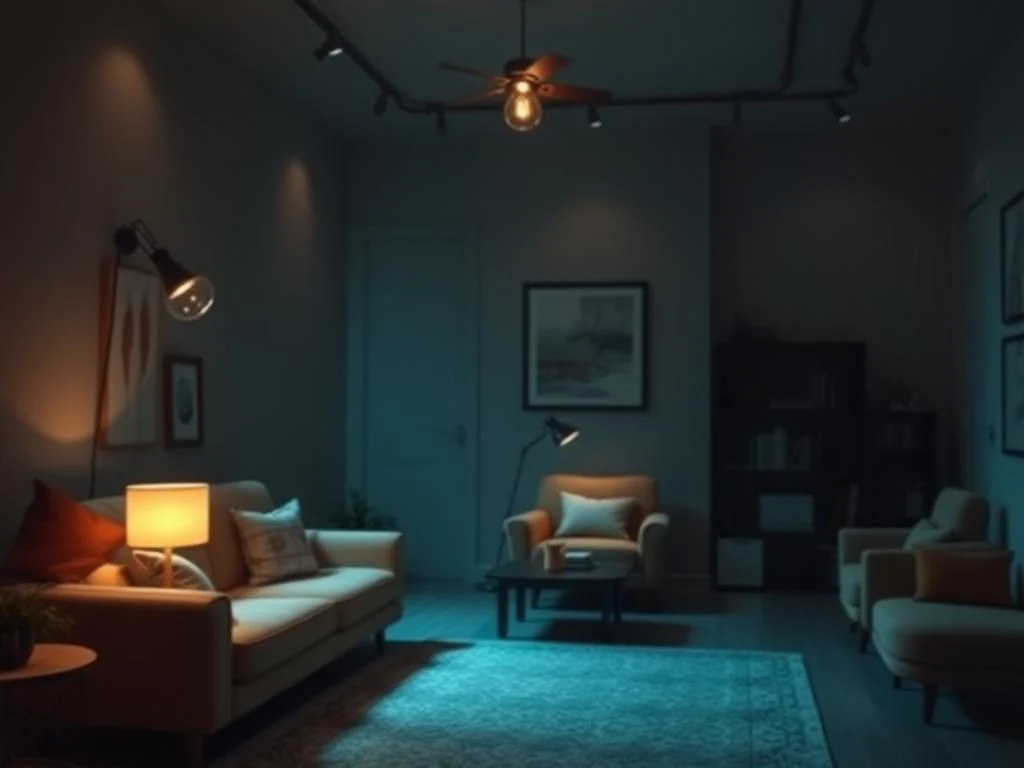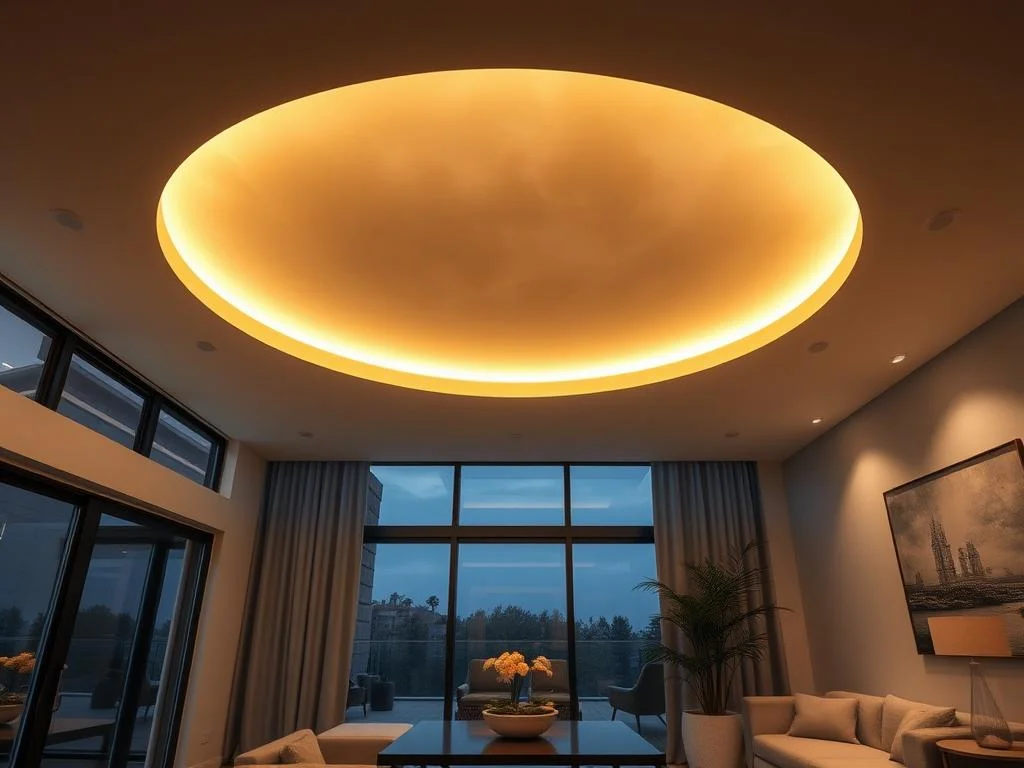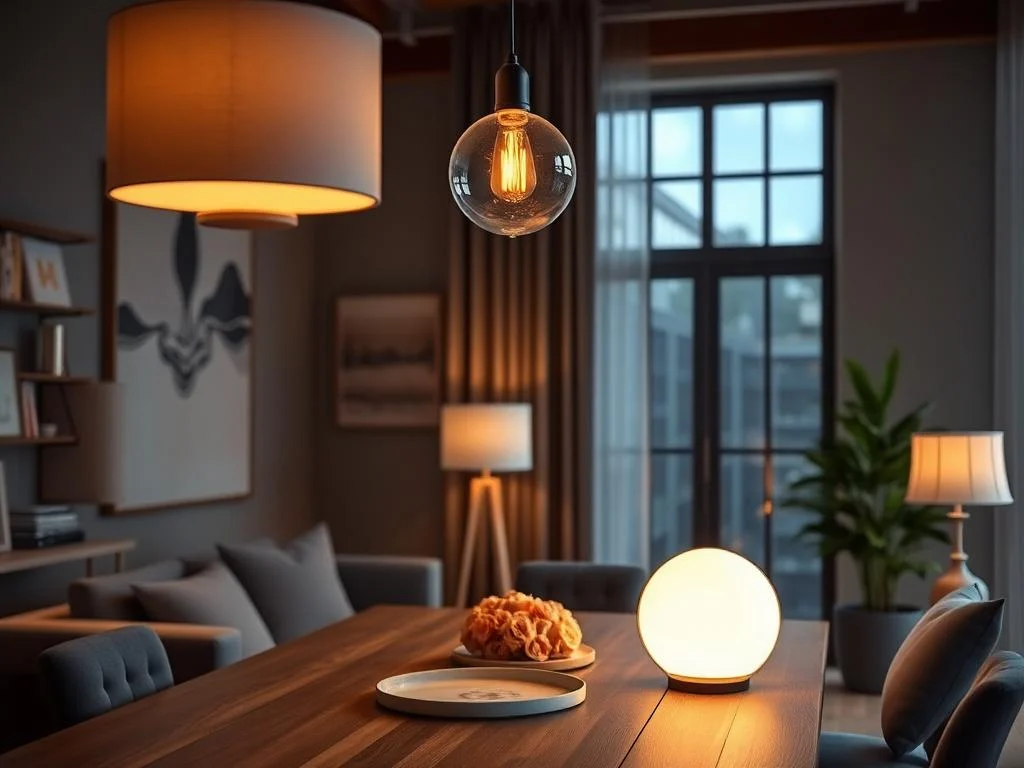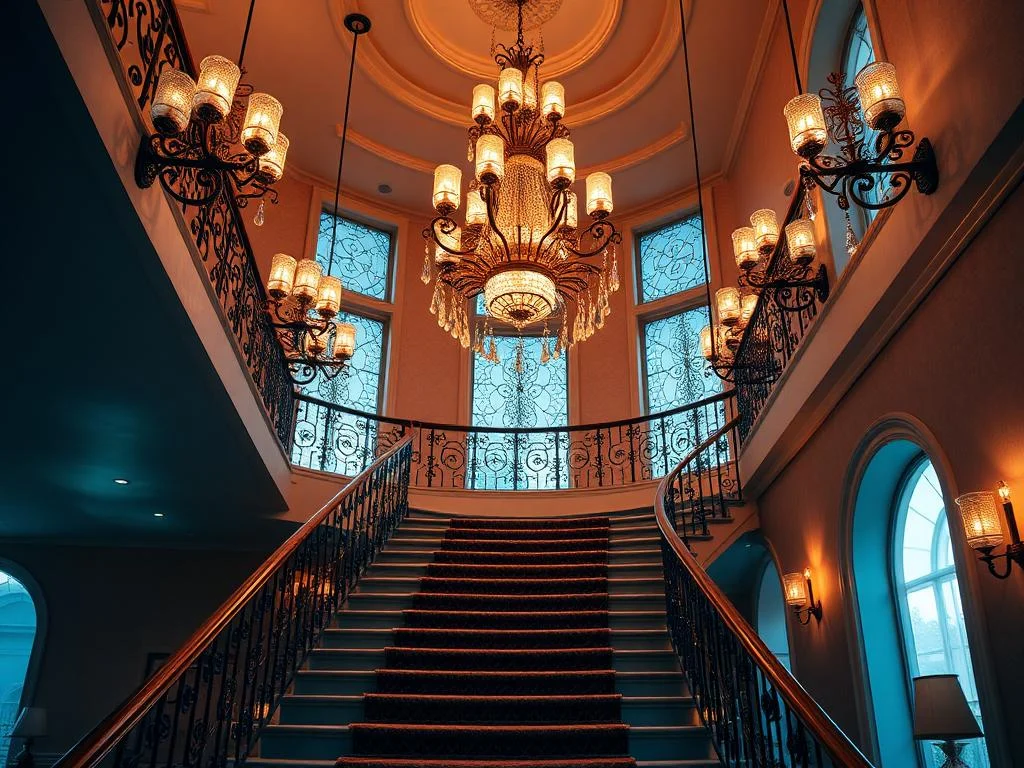
An Introduction to Mood Lighting
What is Mood Lighting?
Mood lighting, also known as ambient lighting, goes beyond simply brightening a room.
It’s about crafting a specific atmosphere and evoking particular emotions through the strategic use of light.
Unlike task lighting, which focuses on providing clear visibility for specific activities like reading or cooking, mood lighting prioritizes creating a feeling or setting a tone.
Think of the warm glow of a fireplace, the soft shimmer of candlelight, or the subtle hues of a sunset – these are all examples of mood lighting at work.
It’s about layering light sources, experimenting with different colors and intensities, and considering the overall effect on the space and its occupants.
Achieving this often involves a combination of techniques, including dimmers, colored bulbs, and strategically placed fixtures.
You can find a wide range of lighting fixtures, including beautiful chandeliers, to help you achieve the perfect mood.
The Psychological Impact of Light on Mood
The connection between light and our emotions is deeply rooted in biology.
Our bodies have internal clocks, called circadian rhythms, that are heavily influenced by light exposure.
Exposure to bright, blue-toned light during the day helps regulate these rhythms, promoting alertness and focus.
Conversely, exposure to warm, dim light in the evening signals to our bodies that it’s time to wind down, promoting relaxation and sleep.
Beyond circadian rhythms, different colors of light have distinct psychological effects.
Blue light is often associated with feelings of calmness and clarity, while red light can evoke feelings of warmth and passion.
Green light is often linked to feelings of balance and harmony.
Understanding these nuances allows us to consciously manipulate light to influence our mood and create desired emotional states.
For example, a dimly lit room with warm-toned lighting can create a cozy and intimate atmosphere, perfect for relaxation and connection.
Key Elements of Effective Mood Lighting
Creating effective mood lighting isn’t just about throwing a few colored bulbs into a room.
It requires a thoughtful approach and consideration of several key elements.
Layering is crucial – combining ambient, task, and accent lighting to create depth and visual interest.
Dimmers are essential for controlling the intensity of light and adapting to different moods and activities.
Color temperature plays a significant role, with warmer tones (2700K-3000K) creating a cozy and inviting atmosphere, while cooler tones (4000K-5000K) are more energizing and stimulating.
The placement of light sources is also critical – consider bouncing light off walls and ceilings to create a softer, more diffused glow.
Finally, the type of light source matters – LED mood lights offer energy efficiency and a wide range of color options, while traditional incandescent bulbs provide a warm, classic glow.
When considering your bathroom, don’t forget the importance of stylish taps to complement your overall design.
Popular Types of Mood Lighting Solutions
The options for creating mood lighting are vast and constantly evolving.
String lights, often used for outdoor spaces, can also add a whimsical touch to indoor areas.
Salt lamps, with their warm, amber glow, are a popular choice for creating a relaxing atmosphere.
Uplighting, which directs light upwards, can highlight architectural features and create a dramatic effect.
Downlighting, which directs light downwards, can create a focused pool of light for reading or other tasks.
Smart lighting systems offer unparalleled control, allowing you to adjust brightness, color, and even create custom lighting scenes with the touch of a button.
These systems often integrate with voice assistants, allowing for hands-free control.
Finally, consider incorporating decorative lamps and sconces to add visual interest and create a layered lighting scheme.
For your kitchen, consider a stylish 2 in 1 Washing Machine Tap + Normal Tap to enhance functionality and aesthetics.
How to Choose the Right Mood Lighting for Different Spaces
The ideal mood lighting solution varies depending on the space and its intended use.
In a living room, you might opt for a combination of ambient lighting, such as recessed lights on dimmers, and accent lighting, such as table lamps and floor lamps.
A bedroom benefits from soft, warm lighting that promotes relaxation and sleep.
Consider using bedside lamps with dimmers and blackout curtains to create a cozy and restful environment.
In a dining room, you might choose a statement chandelier or pendant light to create a focal point and enhance the dining experience.
A kitchen requires a balance of task lighting for food preparation and mood lighting to create a welcoming atmosphere.
Consider under-cabinet lighting and pendant lights over the island.
Ultimately, the key is to consider the function of the space and the desired mood you want to create.
If you’re struggling to find the right fixtures, consider reaching out to us at info@enanstores.com for expert advice.
Practical Tips for Installing and Adjusting Mood Lighting
Installing mood lighting doesn’t always require professional help.
Many simple solutions, such as replacing light bulbs with dimmable LEDs or adding string lights, can be easily done yourself.
When installing recessed lighting, it’s important to follow safety precautions and consult with an electrician if you’re not comfortable working with electrical wiring.
Experimenting with different color temperatures and brightness levels is key to finding the perfect ambiance.
Don’t be afraid to try different combinations until you achieve the desired effect.
Consider using smart lighting apps to create custom lighting scenes and automate your lighting based on time of day or activity.
Regularly clean your light fixtures to ensure optimal brightness and performance.
For any construction material needs, visit Enan Stores for quality products and competitive prices.
Common Mistakes to Avoid
Even with the best intentions, it’s easy to make mistakes when creating mood lighting.
One common mistake is relying solely on overhead lighting, which can create a harsh and unflattering atmosphere.
Another mistake is using too much bright light, which can be overwhelming and detract from the desired mood.
Avoid using too many different colors of light, as this can create a chaotic and jarring effect.
Don’t forget to consider the color of your walls and furniture, as these can influence the overall mood of the room.
Finally, avoid neglecting task lighting – even in a mood-focused space, you still need adequate lighting for specific activities.
If you’re unsure about any aspect of your lighting project, don’t hesitate to contact us at 0731 451 401 for personalized assistance.
Future Trends and Sustainable Options in Mood Lighting
The world of mood lighting is constantly evolving, with new technologies and trends emerging all the time.
Biophilic lighting, which mimics natural light patterns, is gaining popularity as people seek to connect with nature indoors.
Dynamic lighting, which changes color and intensity throughout the day, is being used to improve productivity and wellbeing.
Human-centric lighting, which is designed to support our natural circadian rhythms, is becoming increasingly common.
Sustainability is also a major trend, with a growing demand for energy-efficient sustainable lighting trends.
LEDs are already a more sustainable option than traditional incandescent bulbs, but new technologies, such as organic light-emitting diodes (OLEDs), offer even greater energy savings and design flexibility.
At Enan Stores, we are committed to offering a wide range of sustainable lighting options to meet the needs of our customers.
You can also reach us on WhatsApp at 0731 451 401 for quick inquiries.
Conclusion
Creating effective mood lighting is an investment in your wellbeing and the overall ambiance of your home.
By understanding the psychological impact of light, considering the key elements of design, and staying abreast of emerging trends, you can transform your living spaces into havens of relaxation, inspiration, and connection.
Don’t underestimate the power of light to shape your emotions and enhance your daily life.
For all your home improvement needs, including lighting fixtures and other essential materials, visit Enan Stores.
Need help with your car importation?
Consider Cars Kenya for seamless and reliable services.
You can also reach out to us via email at info@enanstores.com or give us a call at 0731 451 401.
Message us on WhatsApp at 0731 451 401 to discuss your specific requirements.
FAQ
- What is the difference between ambient lighting and task lighting?
Ambient lighting creates a general mood and atmosphere, while task lighting provides focused illumination for specific activities. - What color temperature is best for creating a relaxing atmosphere?
Warmer color temperatures (2700K-3000K) are generally considered best for creating a relaxing atmosphere. - How can I control my mood lighting?
Dimmers, smart lighting systems, and voice assistants can all be used to control mood lighting. - Are LEDs a sustainable lighting option?
Yes, LEDs are significantly more energy-efficient than traditional incandescent bulbs and are considered a sustainable lighting option. - What are some common mistakes to avoid when creating mood lighting?
Relying solely on overhead lighting, using too much bright light, and using too many different colors of light are common mistakes to avoid.




Add a review
Your email address will not be published. Required fields are marked *